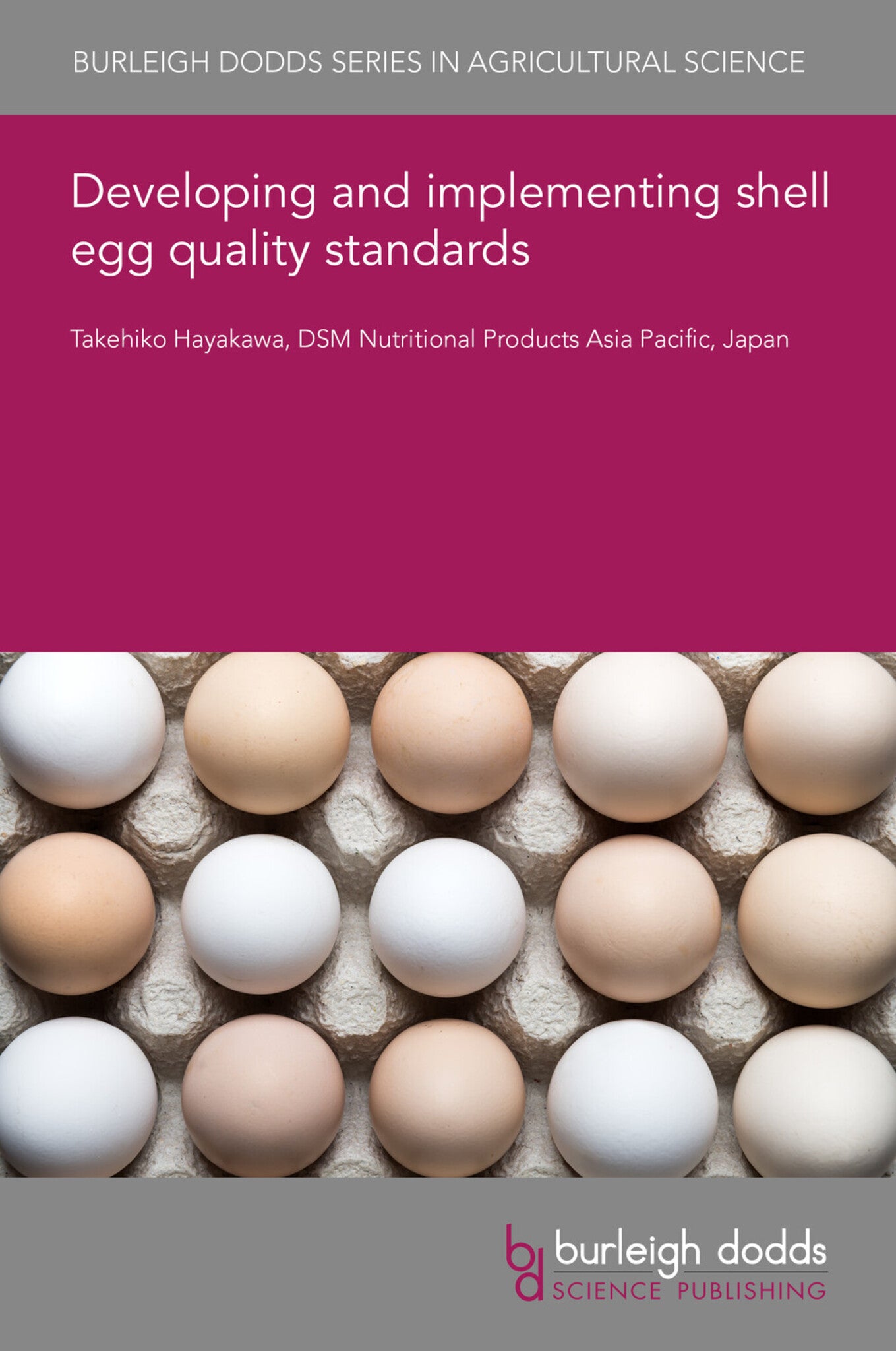We're sorry. An error has occurred
Please cancel or retry.
Developing and implementing shell egg quality standards

Some error occured while loading the Quick View. Please close the Quick View and try reloading the page.
Couldn't load pickup availability
- Format:
-
14 November 2025

This chapter presents a comprehensive overview of shell egg quality standards, emphasizing the importance of egg quality in poultry science due to its impact on food safety, nutrition, and commercial viability. It delineates the multifaceted nature of egg quality, examining both external (eggshell) and internal (egg yolk and albumen) characteristics. External quality is assessed through factors like size, weight, and shell composition, while internal quality focuses on the nutritional value and freshness of the yolk and albumen. The chapter also discusses the influence of genetic, nutritional, and environmental factors on egg quality. Moreover, it compares international quality standards across major markets like the United States, Europe, and Japan, highlighting their practical implications. Future research directions in egg quality, including emerging technologies, genetic advancements, and sustainability practices, are explored. This chapter integrates scientific research and practical application, offering valuable insights in the field of egg quality assessment and enhancement.

TECHNOLOGY & ENGINEERING / Agriculture / Animal Husbandry, Poultry farming, TECHNOLOGY & ENGINEERING / Agriculture / Sustainable Agriculture, TECHNOLOGY & ENGINEERING / Food Science / Food Safety & Security, Sustainable agriculture, Agricultural science, Food and beverage safety

- 1 Introduction
- 2 Understanding egg quality
- 3 External quality: eggshell characteristics
- 4 Internal quality: yolk and albumen
- 5 Egg quality standards by market
- 6 Future trends in egg quality research
- 7 Conclusion
- 8 References



